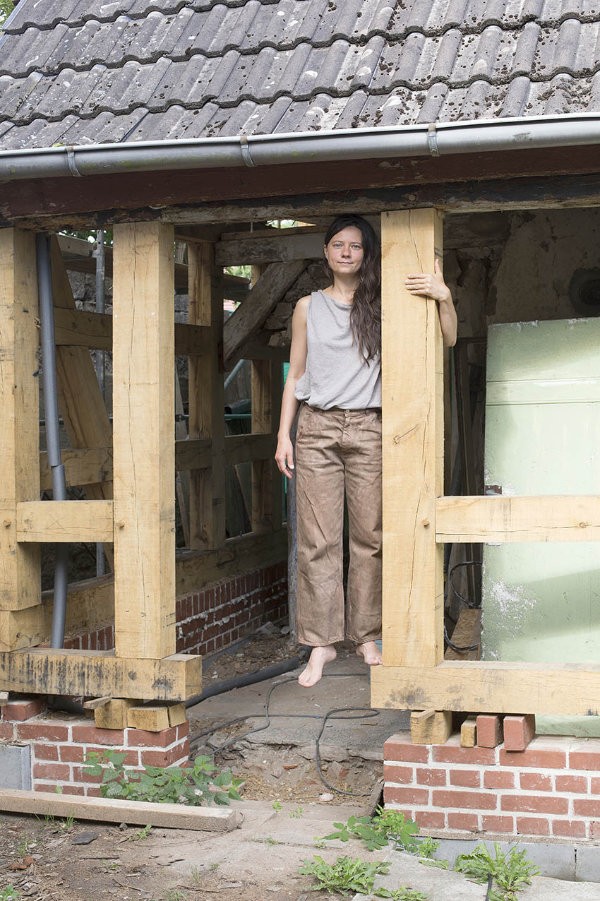
Anne Schwalbe is a Berlin-based photographer with a myriad of creative interests. As well as taking photos for her gardening column in Zeit Magazin, she makes her own line of organic wool clothing, whilst her photography continues to be sold and exhibited internationally.
In 2014, Anne decided to buy a derelict farmhouse situated in an ancient German village. It runs along the river Elbe in the German state of Sachsen-Anhalt.
With no bathroom, an outdoor shower, a composting toilet and a basement in need of reconstruction, staying at the cottage is very much an escape to a simpler way of being.
Anne tells me more about her creative life, slow living and the gradual process of restoration.
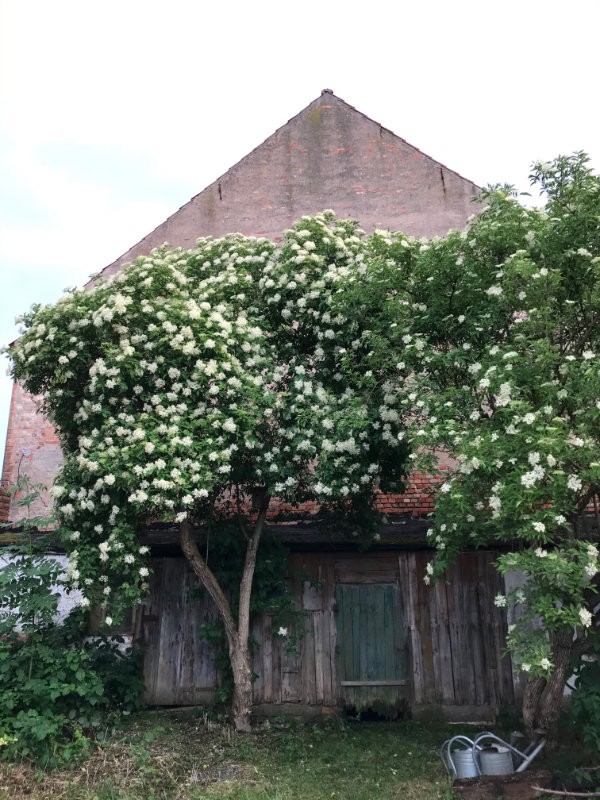
How has your artistic career evolved?
My interest in photography began when I started taking photos in school. When I was 25, I did a workshop in developing black and white photos. I was also studying German literature and cultural studies during that time.
I was very shy and low in self-consciousness. I thought I wouldn’t be able to study fashion design, even though I’d considered it during school. Now I sew my own clothes and also sell pieces in my online shop.
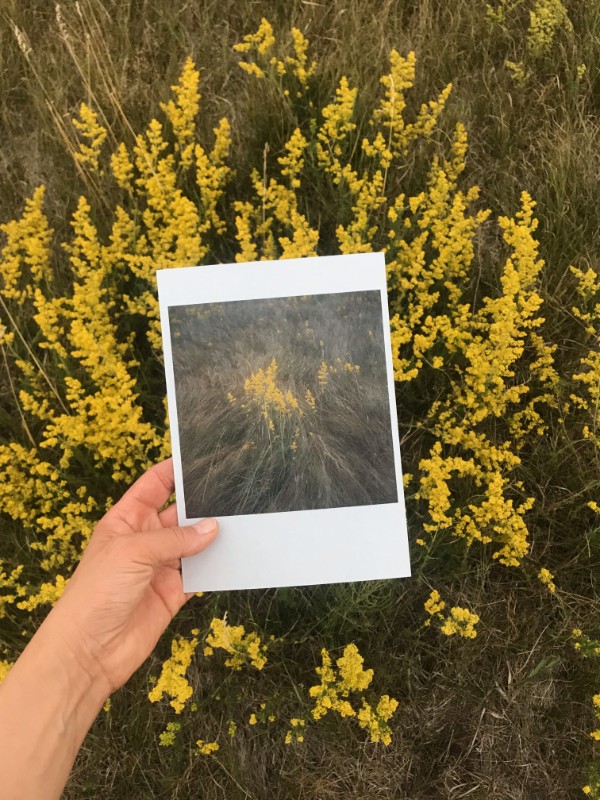
I am a late bloomer and needed time to figure out what I wanted, but also to become self-confident and brave enough to try certain things. Meanwhile, everything came together.
In my 20s I worked for several years as a florist. I take photos of gardens now and I am very happy to have my own column ‘The Gardens of Others’ for the German publication Zeit Magazin.
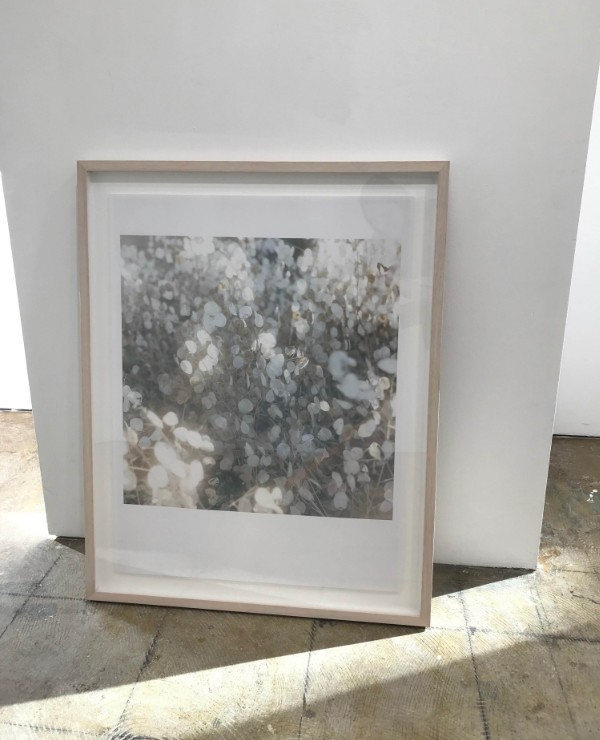
I like to try new things and photography is a big part of that. I see photos that I could take all the time, everywhere. I like to take photos of clothing too.
Sometimes, I think I am interested in too many things, because I feel time is running out and life is short. Oh yes, this winter I hope to also do some ceramics again. Some plates, vessels, maybe mugs.
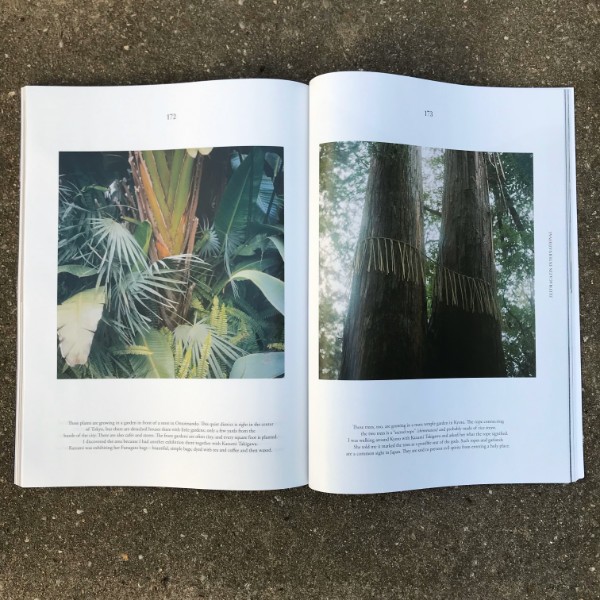
What is your photography primarily about?
Hopefully about nature and silence. The void. It makes me very happy that people often tell me that they calm down when looking at my photographs.
I take photos with a medium format camera, analogue. The negatives are 6 x 6cm. I make all the prints myself in a colourlab and also do big prints for exhibitions.
But I find it very difficult to talk a lot about my photography work. I work very intuitively.
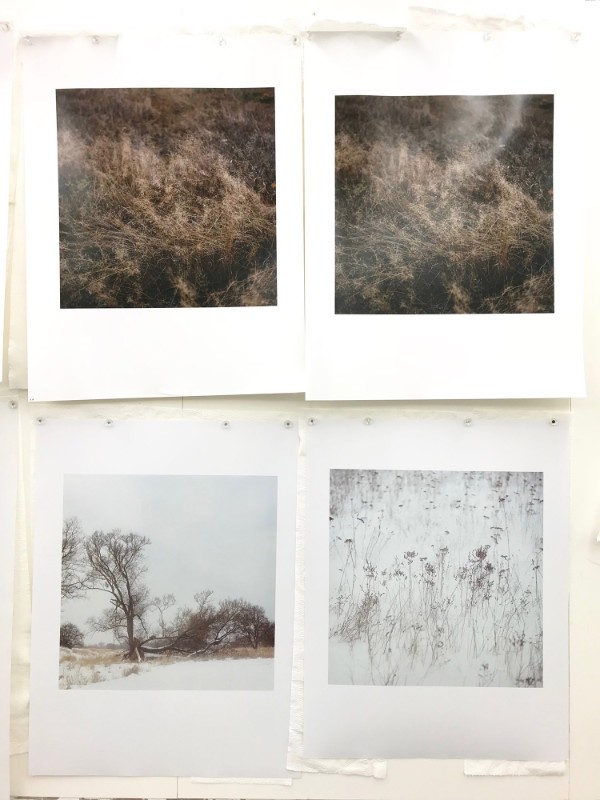
What is the history of the farmhouse and why did you decide to buy it?
My house is around 200 years old. It is on land that used to be occupied by part of the city wall and the city trench, three minutes from the dyke and the meadows.
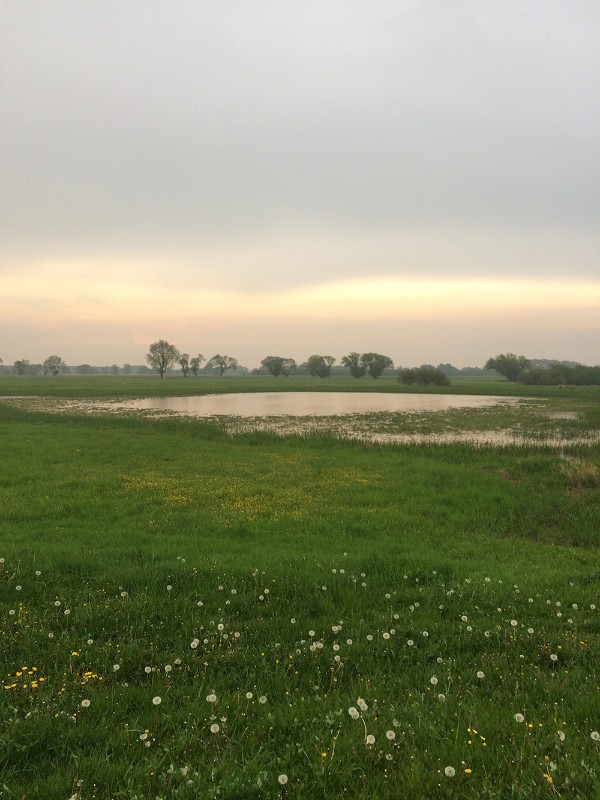
I’ve known the village since 2003. When I studied photography, we spent some days there as a class for a project on the village. I also took photos of special old wallpaper I found in abandoned empty houses. As part of the project we created an exhibition and a book.
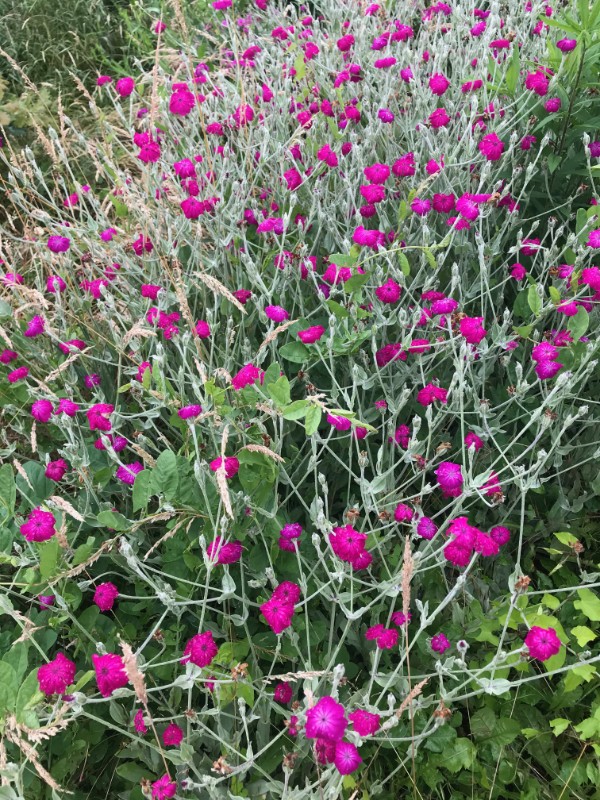
I continued to go to that village because I loved it. In around 2012, I stumbled across the farmhouse and asked the owner if he wanted to sell. I waited two years for his decision and finally bought it in 2014. It all came together.
Some of the craftspeople who worked on the timber frame gable of my house this year said, ‘the house and owner are a good fit’.
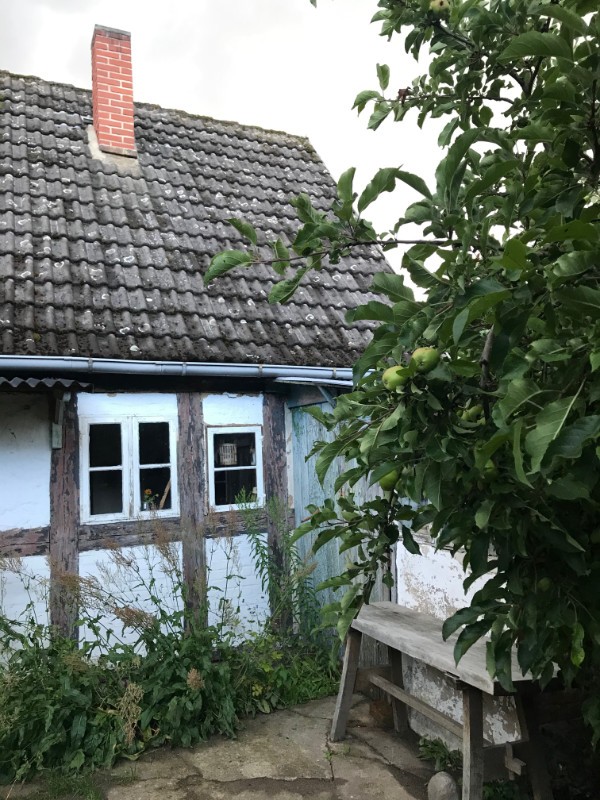
What renovations have you done so far?
Too little! The house was last remodelled in the mid-century. This year, with the help of many people, the timber frame gable on one side was reconstructed, but it’s not finished yet. One of the chimneys is new since last year.
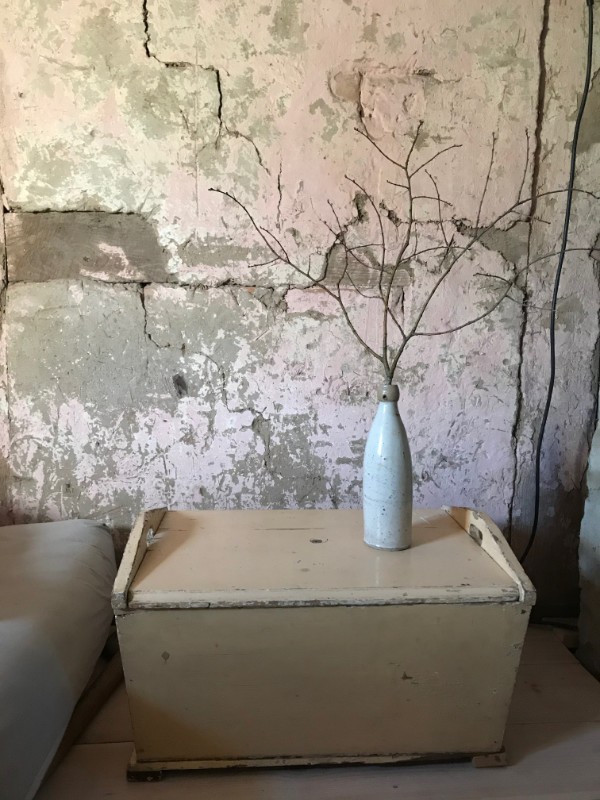
With the reconstruction of the timber frame gable, the major works on the house have finally begun. Depending on my financial possibilities, it will still take some time. It is challenging to reconstruct this house by myself as a freelance artist.
Now I understand the meaning of ‘Der Weg ist das Ziel’ (The journey is the reward). I have learned this through the process of renovation.
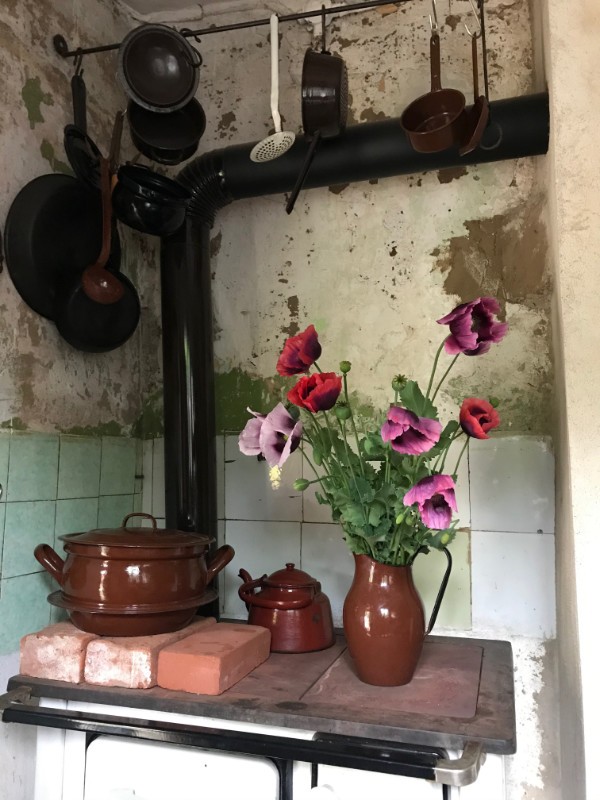
Where do you currently call home?
I still spend most of the year in Berlin – the city where I was born and grew up. My flat in Berlin is small and still affordable and is also my office.
In the future, I’d like to spend more time in the countryside, but the house needs more work. It is too humid to live here all the time, to store paper things such as my books and prints.
I need to reconstruct the whole basement and the floor. I need to install a bathroom. There is just a kitchen sink and a garden shower. You can enjoy a very simple life here.
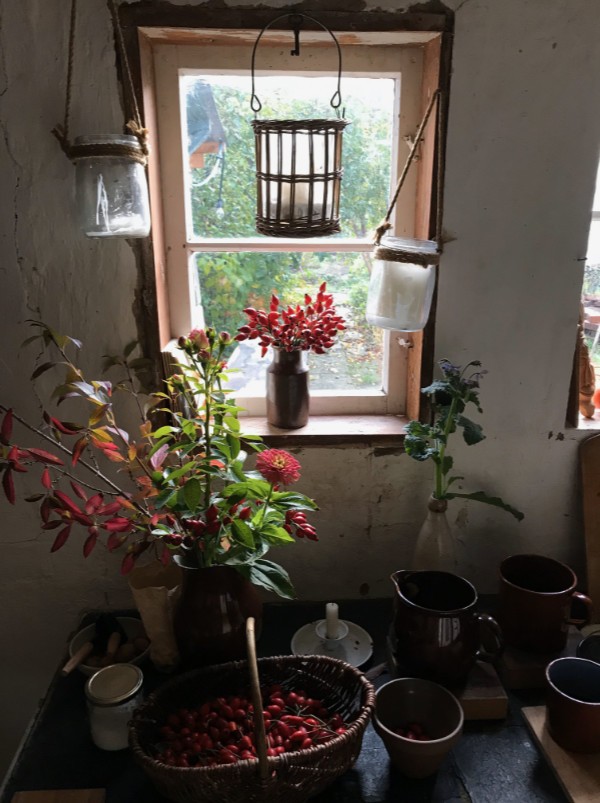
What interior styles are you inspired by?
I really love simplicity. I feel most comfortable in empty rooms, with just, let’s say, a piece of wood, or a bench, and a stove. I love empty walls. I do like to have some pictures on my walls too, but I always need some emptiness.
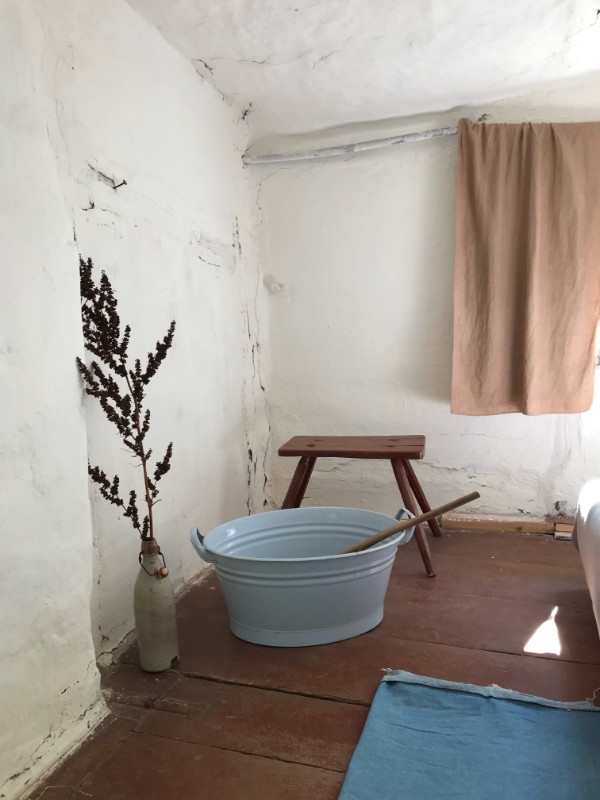
There is a whole concept around emptiness in Japanese philosophy, the concept of ‘Ma’. There is also a quote I love by the philosopher Byung Chul Han, “If you want to be able to think, you need silence.”
When it comes to space, I would say you need emptiness in order to live or to be creative or to have ideas.
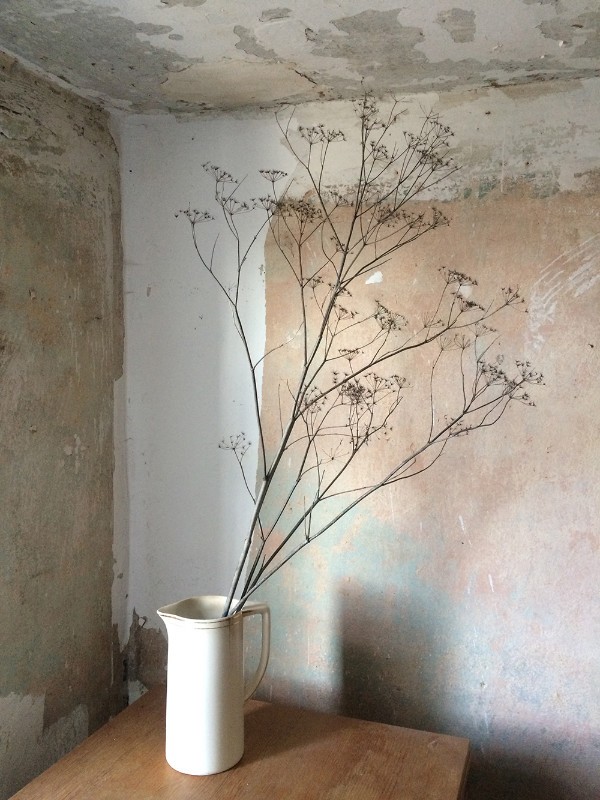
I really like old stoneware and have a collection of pieces. When my house is finally reconstructed, I want to have one room as a storage room. That way the other rooms can be more empty with just a few things.
Some of the most interesting decorative elements can be a piece of wood. A little bench, a beautiful fabric weaving, stoneware, a jar, a twig, a vessel, a stool, a simple wreath, a stone, a photograph of course.
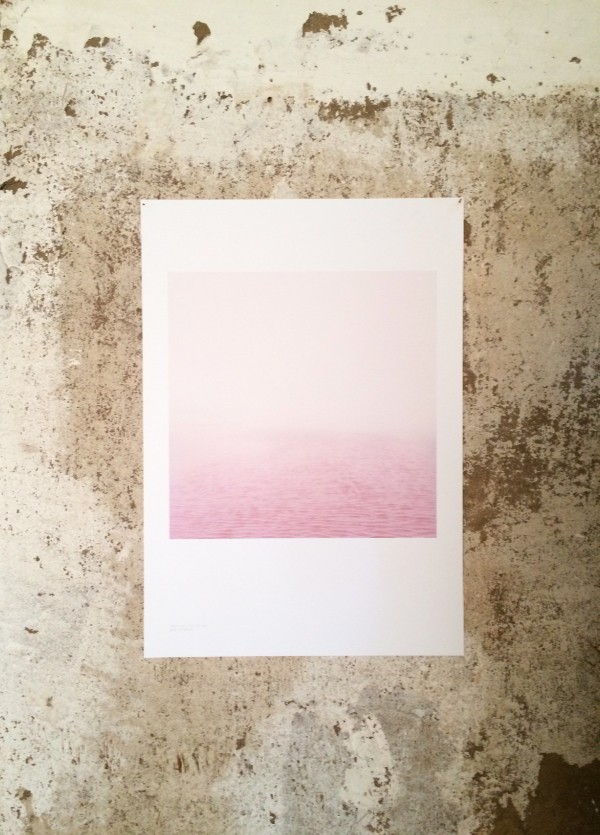
I am a big fan of upcycling. I am from East Berlin and there was a lack of material in the east. So people had to upcycle or they just had to be full of ideas on how to make things. As a teenager I once made some palm tree earrings from a neon green plastic bottle.
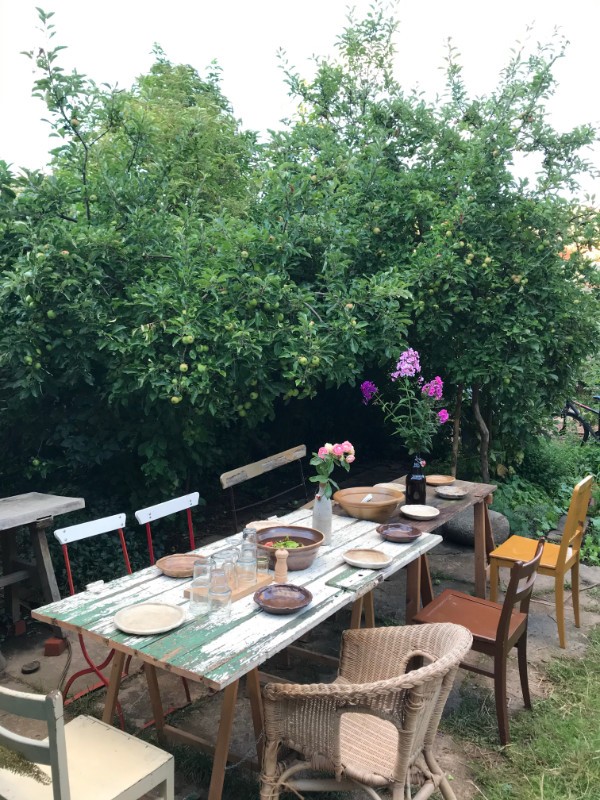
I appreciate materials and resources and try to value or use everything. For years many of my tables are made from old doors. You just need two trestles and a door and you have a table.
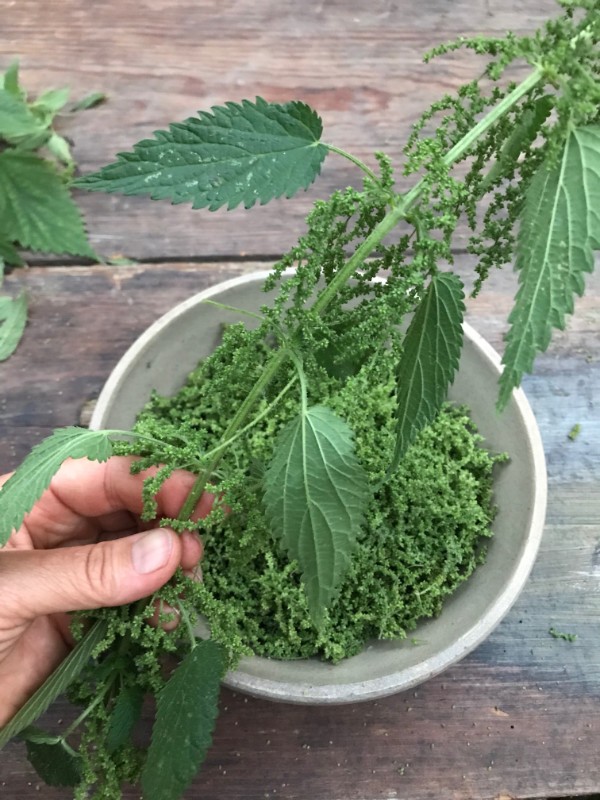
How do you spend time in the house?
Renovating a window, water the plants, dye some fabric or clothes, collect stinging nettles, make elderberry juice. Taking photos of course!
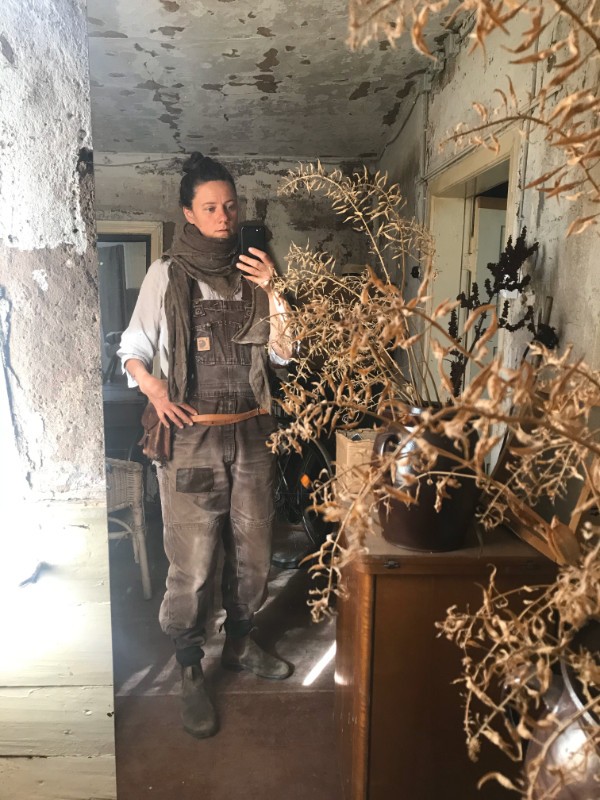
Over the years I’ve taken so many photos there. The landscape and atmosphere is very inspiring.
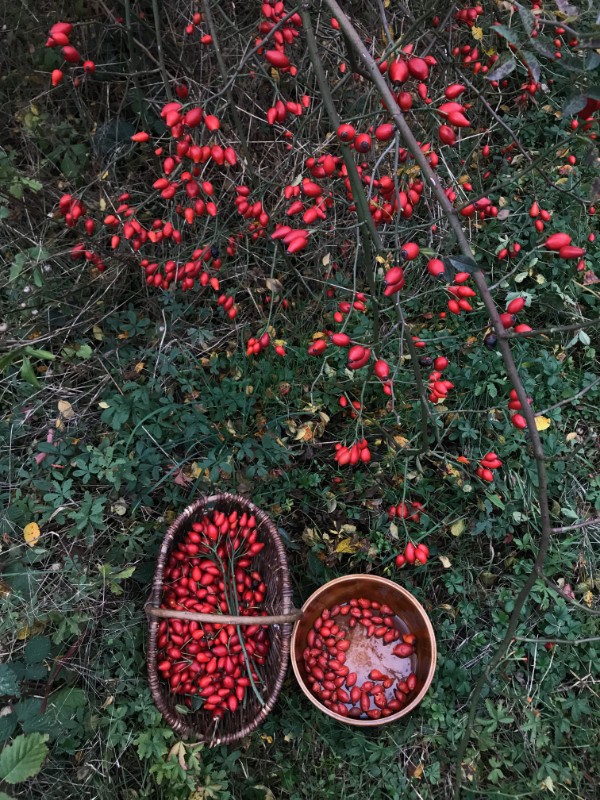
How do you spend time outdoors?
My garden is about 800m2. I do not really have time for it but try to do some gardening just for the joy.
This year I planted pumpkins and try to grow kale. I’m not sure if they will survive the slugs. A heavy problem really. But sage, lavender, roses, fennel and stinging nettles are growing well. So I concentrate on these plants.
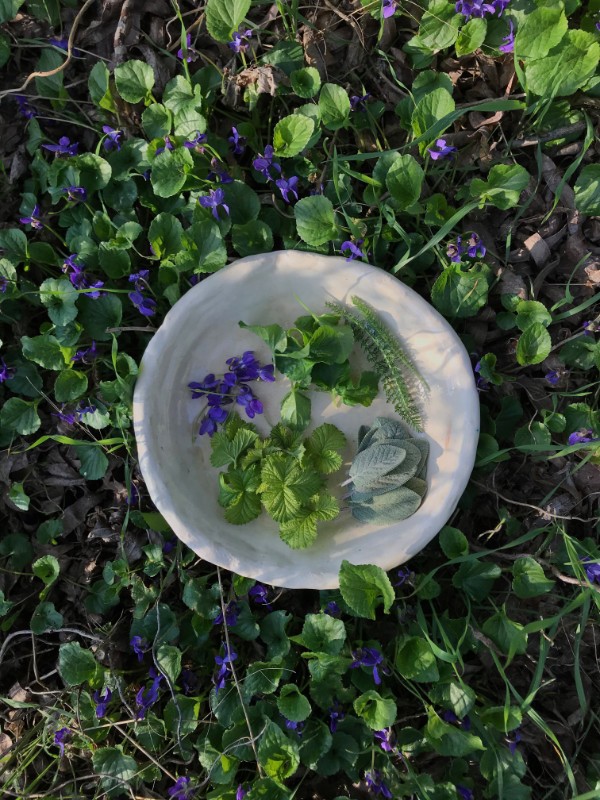
I plan to do more with the garden. For now though, it is a wild beautiful mess and I hope insects and animals are happy about that!
The house also has a walled courtyard with a nice climate, warmer than the garden, which is very good for plants. I plan to have a fig tree there.
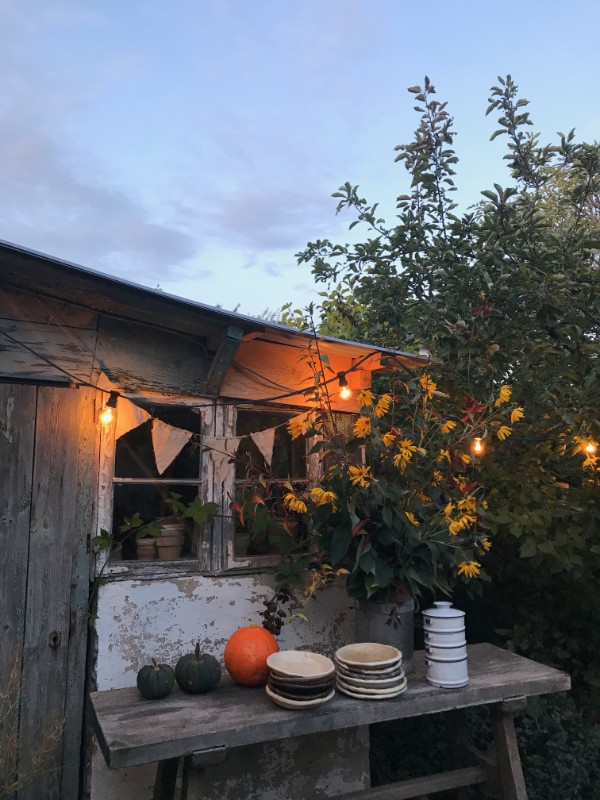
What do you love most about staying at the house?
The nature, the community, the people, the birds, the river, the trees, the plants, the storks, the toads! The chats on the street with someone passing by. Of course my house and garden. The buildings.
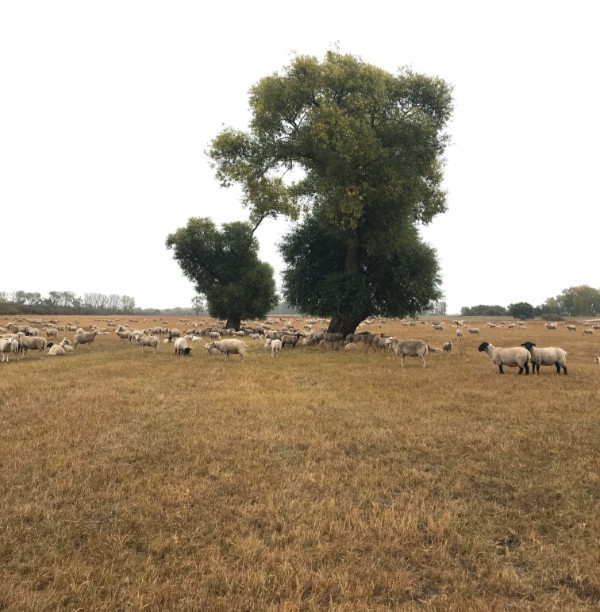
The village is around 1000 years old. It is a very small, with the character of a small town from 200 years ago. It’s really very special. Life somehow feels very rich there and also more intense.
What are you working on at the moment?
Right now I am sewing some shirts and dresses for my online shop. I am also talking with gardeners for my new gardening column at Zeit Magazin. Other times I am planning some new postcards or limited edition prints. Or I prepare exhibitions.
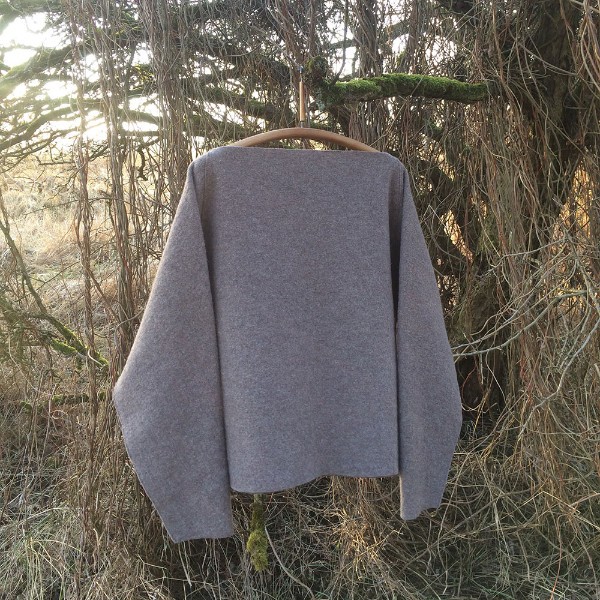
I was in Japan in 2019 for my exhibition at Curator’s Cube in Tokyo. I have plans to do a book with the photos I took while I was there.
Describe your daily routine
There is no typical day. Perhaps just at the beginning and the end of the day.
I have a good morning routine. I started doing yoga about 10 years ago. I begin the day with 20-30 minutes. Afterwards I have a chamomile tea, a shower and breakfast.
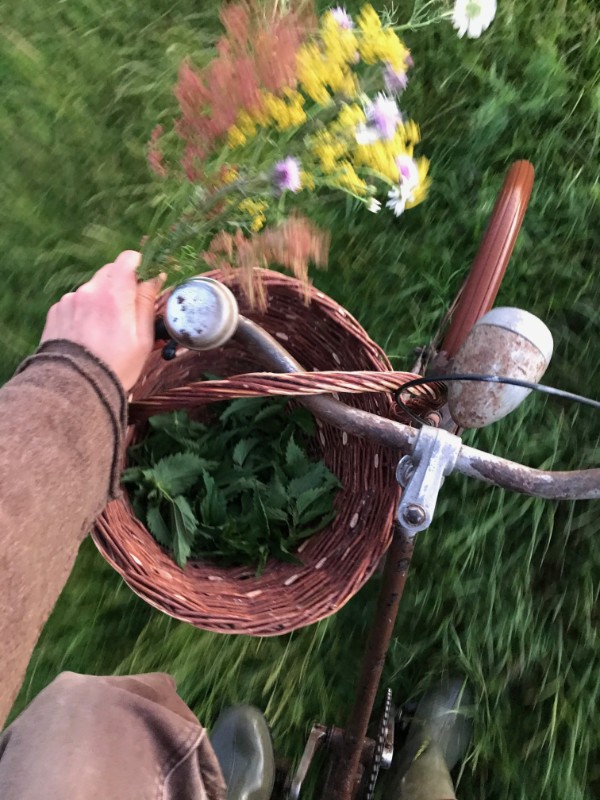
Between these routines every day is different. On some days I prepare orders from my online shop which is growing. This makes me really happy because it can make me independent. On other days I go to the colourlab and do prints from my negatives. A task I should do more often.
In the evening one of the last things I do is the washing up. I am a big fan of washing up and really do not like dishwashers. It helps that I enjoy looking at and feeling my dishes. A lot of ceramics, stoneware. It’s a nice task you can do with your hands. For me it is a kind of evening meditation.
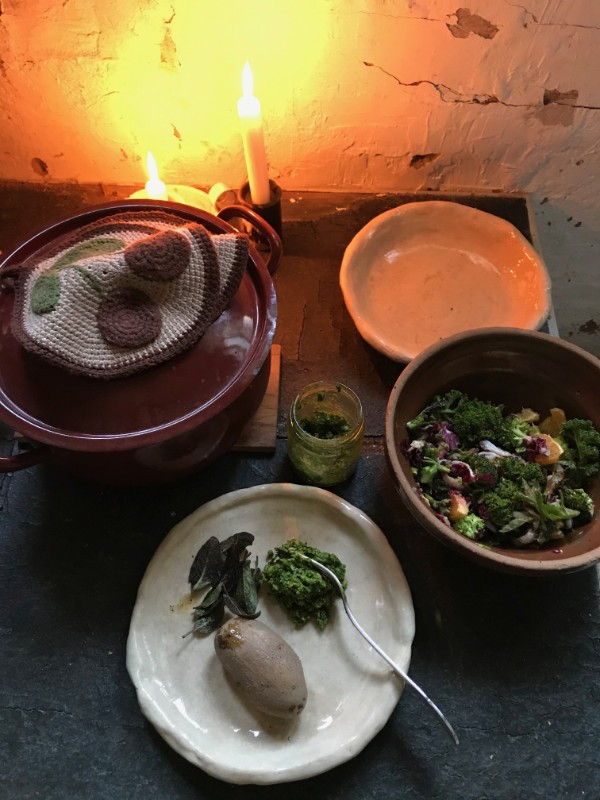
I actually just wrote a whole article in German about the joy of doing the dishes. In the morning I put the dishes back on the shelves. It’s a nice little productive thing to do in the morning and in the evening.
anneschwalbe.de / anneschwalbe.shop / @anneschwalbe
Portrait by Stephanie Neumann, all other photography by Anne Schwalbe




